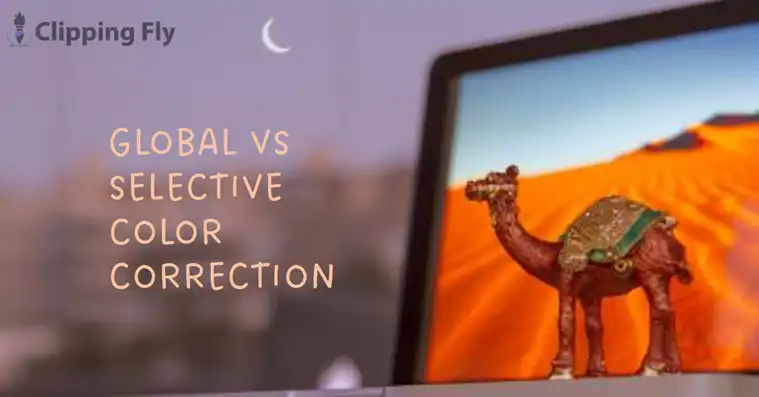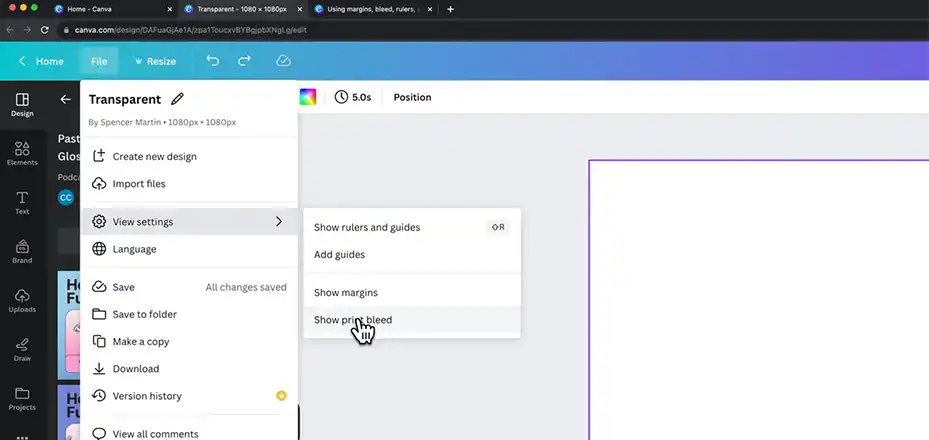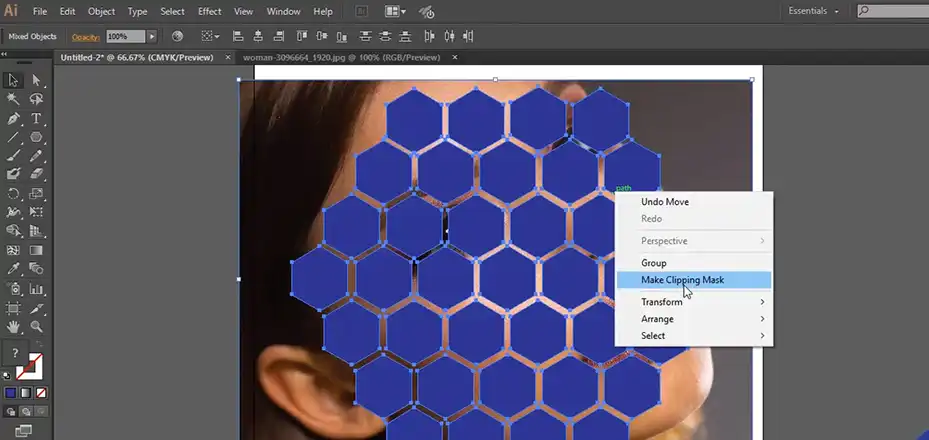Have you ever stared at a photo on your phone and thought, “Dang, those colors really pop!” Or maybe you’ve scrolled past a picture so blah it could bore a sloth? The secret behind both is often color correction magic.
I’m talking about techniques that can pump up dull shots or creatively alter the entire vibe. There are two main ways of doing this – global adjustments that change everything at once, and selective tweaks to specific parts. To find out when to use each can level up your pictures from meh to magnificent, read on till the end!

What is Global Color Correction?
Global color correction refers to adjusting the overall color and tone of an entire clip or sequence. The corrections are applied uniformly to the whole image. For example, you may change the white balance to neutralize color casts from lighting conditions, alter brightness, contrast, and saturation to make the footage punchier, apply LUTs (Lookup Tables) to quickly change the color mood or style, or use color wheels to shift the overall hue for creative color grading.
Global corrections affect everything in the shot and are an efficient way to get an initial balanced, pleasing look. They form the foundation upon which more targeted selective adjustments can be made later.
Advantages of Global Color Correction
- Quickly correct color casts and imbalances from improper white balance
- Normalizes exposure issues like under/over-brightness in the original footage
- Gives fast, broad control over the clip’s overall color and contrast
- Allows creative color transformations with LUTs or color wheels
- Easier and faster than selective adjustments for initial corrections
Drawbacks of Global Adjustments
- Affects all areas, unable to selectively fix problem spots
- Can oversaturate or blow out colors if pushed too far
- Hard to subtly shape light and color for visual storytelling
- LUTs speed up grading but can overly bake-in a “look”
So global corrections give a fast way to balance and grade a clip but lack finesse and specificity.
What is Selective Color Correction?
Selective color correction means applying adjustments to specific parts of the image, rather than everything at once. This allows filmmakers to take more control and sculpt the look precisely. Some selective techniques include secondary color grading to isolate and alter a specific color range, using power windows to apply corrections to targeted regions with shape masks, tracking masks that follow moving objects, and custom brush, radial, and gradient masks for local adjustments.
Selective grading is used to tweak shots after initial global adjustments. The goal is to shape light, color, and contrast for visual storytelling.
Advantages of Selective Corrections
- Allows precise control over region-based adjustments
- Can selectively fix uneven exposure or color problems
- Lets you stylize specific objects or areas for more creativity
- Enables subtlety not possible with global changes
- Powerful for emphasizing subjects and guiding the viewer’s eye
Drawbacks
- More time consuming than global adjustments
- Requires greater color correction skill and expertise
- Can introduce artifacts if masks are improperly created or tracked
- Not always needed for basic color balancing and shot matching
Selective techniques afford a fine degree of control for nuanced, professional-level grading suited to high-end work.
Side-by-Side Differences Between Global Color Correction and Selective Color Correction
The main difference between global color correction and selective color correction is that global lacks fine control over local areas and risks overdoing corrections. Selective enables subtler enhancements and fixes with a lower chance of over-correction.
Here are the rest provided –
| Aspect | Global Color Correction | Selective Color Correction |
| Scope | Changes whole image | Changes specific areas or colors |
| Purpose | Fixes color, makes consistent look | Emphasizes or de-emphasizes colors |
| Tools | White balance, tint, saturation | Masks, layers, brushes |
| Use | Good for overall color issues | Good for specific color issues |
| Cases | Fixing color temperature, consistent look | Enhancing or reducing colors, skin tones, localized color issues |
| Complexity | Typically simple and fast | Can involve detailed adjustments |
When to Choose Each Approach?
Determining whether global or selective corrections are most appropriate depends on the goals, time constraints, skill level, and needs of the project.
When should you choose global or selective grading? Here are some guidelines:
Global corrections work best when you need to quickly balance uneven footage during editing, normalize clips from different sources, aim for an overall stylistic grade, fix issues affecting the whole image, or are a beginner doing amateur video work. Global gets footage in good shape fast.
Use selective techniques for professional high-end videos, fixing uneven exposure or color affecting only certain areas, achieving a stylized cinematic look, adjusting skin tones, directing attention to subjects, or whenever precision and control over localized corrections is mandatory. Selective takes polished footage to be publication-worthy.
Better to Work with Both – Start with Global and End with Selective
The most common professional approach is to leverage the strengths of global and selective correction together in a two-step workflow:
- Use global adjustments to efficiently normalize and balance all footage first
- Then make selective corrections to fix any remaining issues and creatively finesse the grade
Global changes form the foundation, giving a coherent base look. Selective adjustments then provide the polish and panache.
This layered workflow enables managing color efficiently even for long projects with massive amounts of footage. Global corrections can also be copied and pasted across clips for consistency.
The ordered combination of broad global grading followed by targeted selective corrections gives the colorist both power and flexibility during the process. This facilitates everything from subtle tone-shaping to radical transformations.
Wrapping Up
And here’s the full scoop on global vs selective color correction!
The cliff notes: Use global adjustments to quickly balance and improve overall color when you’re rushed or just starting out. But take it further with selective tweaks to fix issues precisely while getting creative. This wicked combo lets you transform dull shots into dazzlers.
It may seem tricky at first, but with practice, you’ll have endless options for gorgeous grading. From perfect skin tones to ultra-stylized cinematic looks, the color realm is yours to own!
Hopefully, this explains when to use each technique clearly. Hit me up in the comments if you have any other color correction questions! I could chat for days about taking shots from sad to rad.

